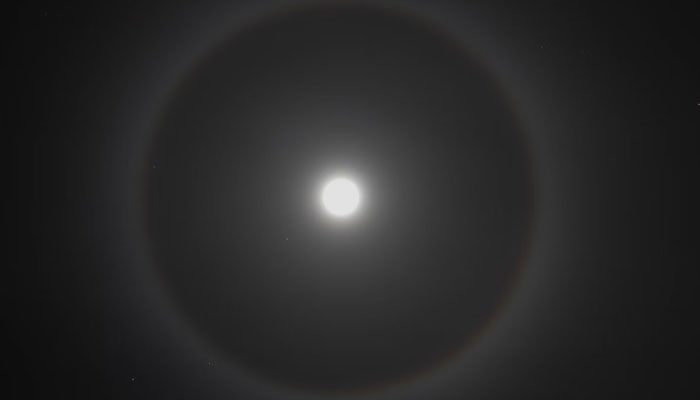Does seeing halo around moon indicate weak eyesight?
Halos, often associated with moon, can also occur around celestial bodies like sun
February 03, 2024

Have you ever gazed up at the night sky and noticed a complete circle of light surrounding the full moon? If you have, you might have wondered about the origin of this fascinating phenomenon.
Contrary to popular belief, the luminous halo around the moon isn't an indication of weak eyesight. Instead, it is the result of specific atmospheric conditions, particularly the presence of frosty particles or ice crystals.
According to experts from Columbia University, these tiny ice particles scatter the moon's light, giving rise to the captivating halo effect.
These frosty particles are associated with a particular type of cloud known as cirrus clouds, which form at high altitudes in the Earth's atmosphere.
Composed primarily of pure ice, these clouds are approximately 31 miles above the Earth's surface. Unfortunately, observing these clouds with the naked eye is nearly impossible due to their substantial height and thin composition.
Regardless of where you observe it in the world or during different seasons, the volume of the halo around the moon remains constant.
Upon examination, the halo's diameter is found to be 22 degrees, a phenomenon attributed to the formation of hexagonally shaped ice particles.
These hexagonal ice particles play a crucial role in reflecting light in a specific manner, creating the beautiful halo effect we see

Light scatters in hexagonal ice particles, creating a circular shape at 22 degrees. This dispersion of light creates the dazzling halo effect around the moon, as the moon's radiance reflects through these particles, reaching our eyes.
Halos, often associated with the moon, can also occur around celestial bodies like the sun. Observing a halo around the sun can be challenging due to its intense brightness, with some locations having a diameter of 46 degrees.









